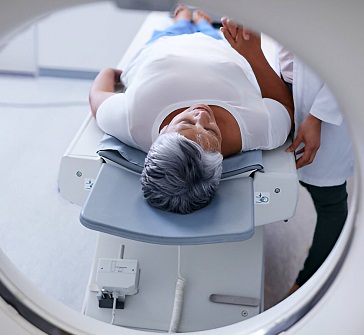 Book Appt.
Book Appt.
 Call Now
Call Now


Bile duct cancer, also known as cholangiocarcinoma, is a rare and aggressive form of cancer that affects the bile ducts, which are responsible for carrying bile from the liver to the small intestine. While not as well-known as some other types of cancer, bile duct cancer poses a significant threat to those who are diagnosed with it.
The bile ducts are a crucial part of the digestive system, aiding in the digestion and absorption of fats by transporting bile produced by the liver. Bile duct cancer occurs when abnormal cells form in the lining of these ducts. There are three main types of bile duct cancer, classified based on their location within the biliary system:
Risk Factors
While the exact cause of bile duct cancer remains unclear, several risk factors have been identified, including:
Symptoms
Bile duct cancer is often referred to as a silent killer because it tends to remain asymptomatic in its early stages. However, as the tumor grows and obstructs the bile ducts, a range of symptoms may manifest, including:
Diagnosis
Diagnosing bile duct cancer can be challenging because of its nonspecific symptoms. Doctors typically use a combination of medical imaging, blood tests, and biopsies to confirm the diagnosis. Imaging studies like CT scans, MRIs, and endoscopic retrograde cholangiopancreatography (ERCP) help visualize the bile ducts and identify abnormalities. A biopsy is often needed to examine tissue samples for cancer cells definitively.
Treatment Options
The treatment of bile duct cancer depends on several factors, including the cancer's stage, location, and the patient's overall health. Treatment options may include:
The Importance of Early Detection
Early detection of bile duct cancer is critical for improving treatment outcomes. Unfortunately, the lack of specific symptoms in the early stages often leads to late diagnoses, which can limit treatment options. Regular check-ups with a healthcare provider and awareness of potential risk factors can help individuals detect this cancer in its earlier, more treatable stages.
In conclusion, bile duct cancer is a rare but formidable adversary. Its insidious nature makes it challenging to detect in its early stages, but understanding the risk factors, recognizing the symptoms, and seeking prompt medical attention can make a significant difference in the prognosis. Advances in research and treatment options offer hope for those affected by this cancer, emphasizing the importance of continued efforts to improve early detection and develop more effective therapies.
SHALBY Sanar International Hospitals provides extensive medical procedures backed up with our state-of-the-art technology and a team of highly qualified & experienced clinical experts.

Grade 2 Endometrium Cancer | Ms. Robiyakhon | Uzbekistan | Dr. Archit Pandit | SHALBY Sanar

Male Breast Cancer Recovery Story | Dr. Archit Pandit | Cameroon | SHALBY Sanar

Ms. Nafisa’s Inspiring Breast Cancer Recovery | Dr. Archit Pandit | Uzbekistan | SHALBY Sanar International Hospitals

Stage4 colon cancer is curable - Colon cancer with liver metastasis | Kenya | Dr Archit Pandit

Patient from Kenya Treated by Dr. Archit Pandit | SHALBY Sanar International Hospitals

Double Cancer Victory: Mrs. Salma Kapoor's Inspiring Recovery Story | Dr. Archit Pandit

Patient from Uzbekistan Treated by Dr. Archit Pandit | SHALBY Sanar International Hospitals

Patient from Uzbekistan Treated by Dr. Archit Pandit | SHALBY Sanar International Hospitals

Successful Carcinoma Buccal Mucosa Surgery of a Patient from Nigeria by Dr. Archit Pandit

Successful Colon Cancer Surgery of Mr. Faraidun Kaka Bra Amin Amin's from Iraq | Dr Archit Pandit

Miraculous Recovery of a patient from Uzbekistan battling Ovarian Cancer | Dr. Archit Pandit

Successful Cancer Detection & Surgery by Dr. Archit Pandit | SHALBY SHALBY Sanar International Hospitals

Successful Colon Cancer Treatment of a patient from Iraq by Dr Archit Pandit | Surgical Oncology

Successful Glottis Mass & Carcinoma Vocal Cord Treatment of a patient from Iraq by Dr Archit Pandit

Successful Stage 4 Colon Cancer Treatment of a patient from Kenya by Dr Archit Pandit

Surviving the Odds: 56-Year-Old's Journey with Recurrent Carcinoma Vocal Cord | Dr. Archit Pandit

Surviving Recto-Sigmoid Cancer: Mr. Syamand Ahmed's Inspiring Journey

Success Story: Iraqi Patient's Liver Tumour Treatment at SHALBY Sanar International Hospitals

Cytoreductive Surgery Success: Iraqi Patient's 30cm Ovarian Tumor Removed Safely

Beating Liver Cancer: Mr. Abdirashid's Inspiring Story

Ms. Nejood's Success Over Pancreatic Cancer: A Remarkable Journey

Transforming Smiles: Revolutionary Buccal Commando Procedure

Wide Local Excision Surgery & Microvascular Reconstruction of a Cancer patient

Successful Surgery of Esophgeal Cancer

Successful Lung Cancer Surgery of Ms. Jerioth Wanjiru from Kenya

Para Thyroidectomy on Pt Jawad Kadhim Tweli from Iraq

Dr Archit Pandit discusses the fascinating case of Geeta Rani
Our doctors pen down their research findings and experiences from time to time. Their words provide deep insight into the latest techniques, technologies and other advancements in healthcare. It provides expert answers to all kinds of health questions for real-life issues.
VIEW ALL




Since the day of its foundation, SHALBY Sanar International Hospitals is committed to provide comprehensive healthcare services. It regularly organizes awareness programs in its premises and encourages outdoor healthcare activities and camps with an intent to put focus on preventive healthcare.
VIEW ALL